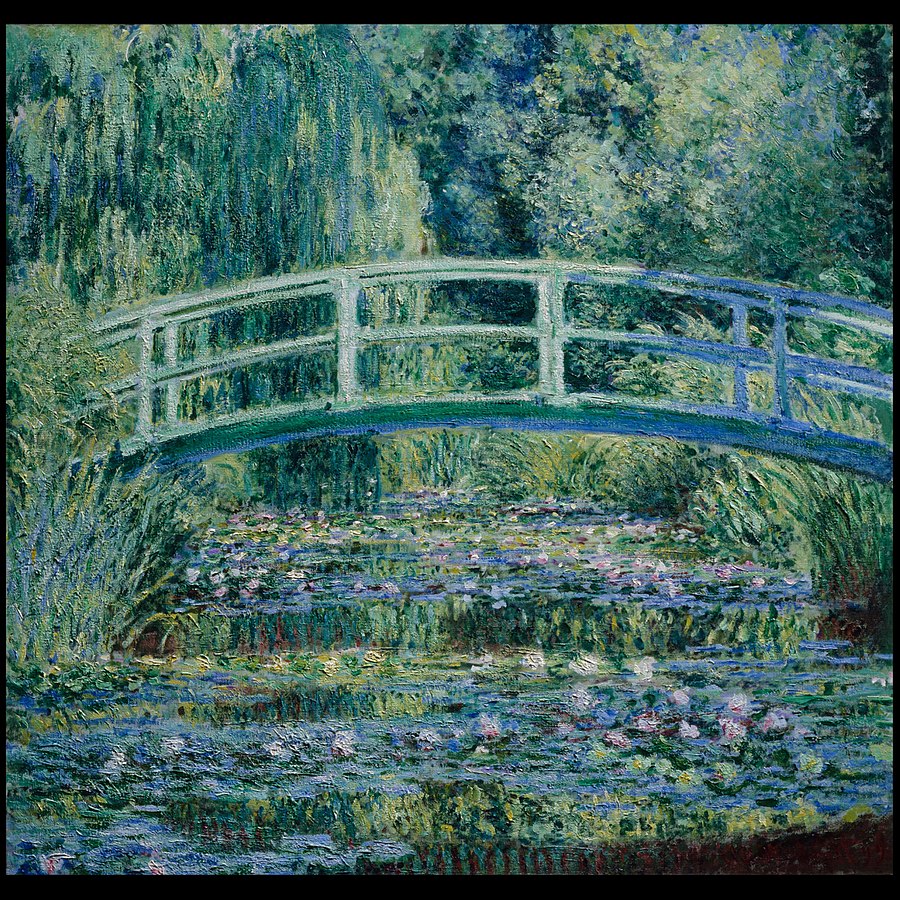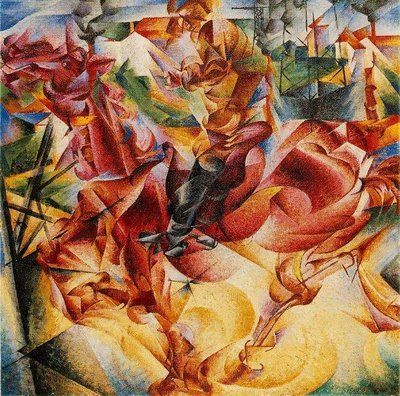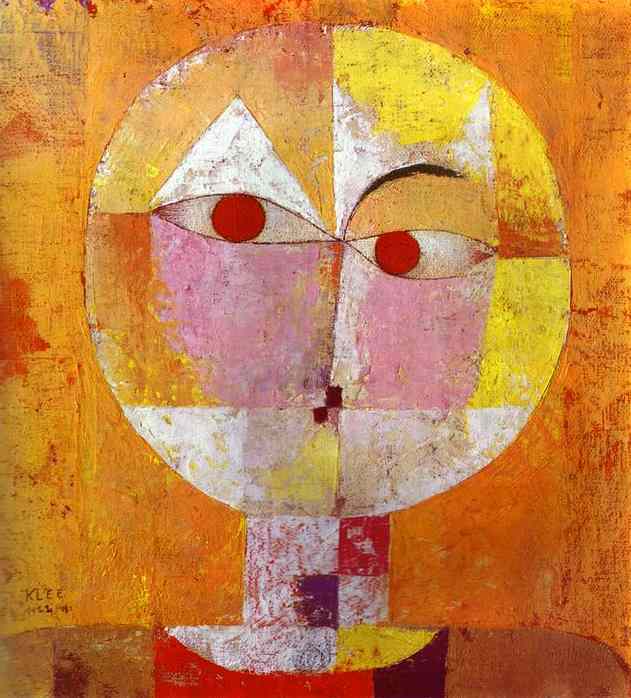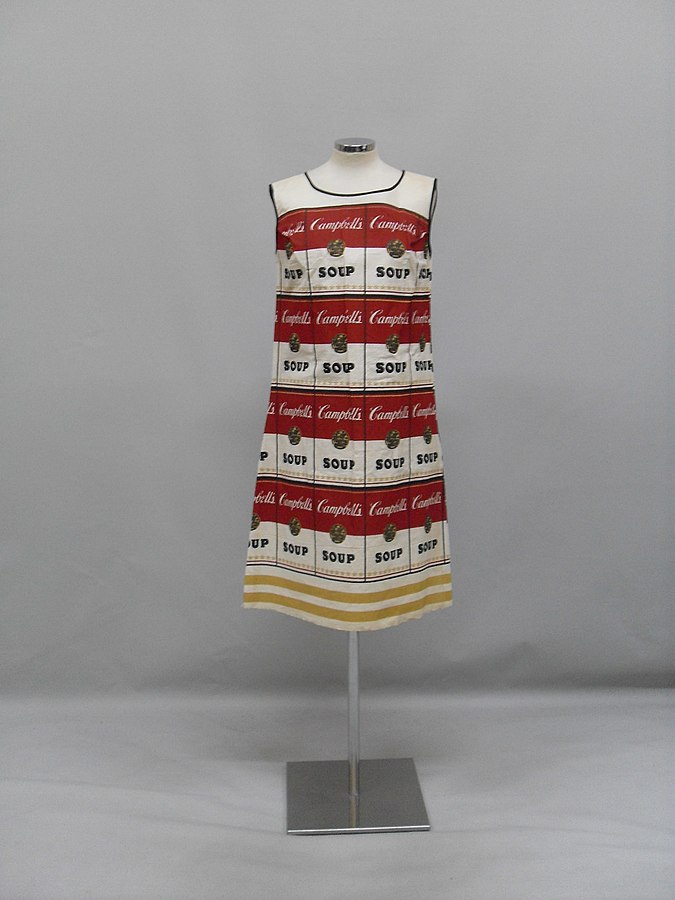History of Modern Art
Introduction:

C.Monet: Water Lilies and Jap. Bridge

A.Marquet: The Beach at Sainte Adresse





B.Newman: Whos Afraid of Red Yellow Blue

The Souper Dress based on Andy Warhol’s Campbell’s soup paintings
We’re quite convinced that a short overview of modern art evolution can be beneficial to our viewers. In this particular blog article in our Daisy Online Gallery we’re discussing its history as well as its most important movements.
How all this started? The roots of Modern Art go back to the Industrial Revolution (c.1760 – 1860), which deeply changed how people lived, worked or spent their free time. Also more people began to live in towns and cities, which necessarily led to new challenges for art, industrial art and design.
Moreover, 19th century social changes inspired artists to explore new themes. Instead of depicting academic subjects involving mainly religion and Greek mythology, portraits and traditional landscapes, artists began to make art about people, places or ideas that were appealing to them. For instance, growing cities became a great inspiration for genre painting and urban landscapes. On the other hand, the suburban villages and holiday spots triggered new forms of landscape painting.
Many philosophical developments which had a significant influence on further art development were brought about in the 19th century. One of the many noteworthy examples is the publication of “The Interpretation of Dreams” (1899) by Sigmund Freud, which popularized the notion of the “subconscious mind”. This work inspired artists to explore and develop new art movements such as “Symbolism” and later “Surrealism”. Furthermore, the new self-consciousness encouraged other artists to expressing their subjective feelings, which eventually led to the emergence of “Expressionism”.
The most important movements of “Modern Art”:
(1) Impressionism (1870s-1880s) (Claude Monet, Eugene Boudin, Camille Pissarro, Alfred Sisley, Edouard Manet, Edgar Degas, Paul Cezanne, and Pierre-Auguste Renoir)
Focused on capturing short-lived moments of light and colour. Brought about the use of non-naturalist colours, and thus laying a base for the modern abstract art of the 20th century.
(2) Fauvism (1905-7) (Henri Matisse, Andre Derain, Albert Marquet, Charles, Camoin Maurice de Vlaminick, and other)
Became famous for bold utilization of colours, which was in palpable contrast to the classical content-oriented aesthetic of the academies. Its main contribution to “modern art” was to show the independent power of colour.
(3) Cubism (flourished 1908-14) (Pablo Picasso, George Braque, Juan Gris, and other)
Introduced an austere style of painting and a composition of split planes as an alternative to Renaissance-inspired linear perspective and rounded volumes. Cubism enriched “modern art” by a new perspective, which was in a contrast to the flat picture plane.
(4)Futurism (flourished 1909-14) (Umberto Boccioni, Carlo Carra, Giacomo Balla, Gino Severini, Luigi Russolo )
Came with the introduction of movement into the canvas and showing beauty in scientific advancement. Futurism praised the dynamism of the new modern world, mainly its science and technology.
(5) Expressionism (from 1905) (Ernst Ludwig Kirchner, Vassily Kandinsky)
Popularized the idea of subjectivity in painting and sculpture. Its main contribution to “modern art” was to show that art may convey personal feelings of an artist about the depicted object instead of just pure accuracy of the painted object.
(6) Dada (1916-24) (Jean Arp, Tristan Tzara)
It was the first anti-art movement against the system which allowed the masacre of The First World War. Tried to further shake up the established world of art and to widen the concept of “modern art”, by embracing new types of creativity (performance art and readymades) as well as new materials (junk art) and themes.
(7) Surrealism (from 1924) (Salvador Dali, Joan Miro, Alberto Giacometti, Paul Klee, and other)
Became one of the most influential schools of avant-garde art. The movement produced an entirely new set of imagery by taking an advantage of the creative power of the unconscious mind. Its main contribution to “modern art” was a great amount of incredibly innovative but often also bizarre compositions. Surrealist art is definitely fun!
(8) Abstract Expressionism (1948-60) (Jackson Pollock, Willem De Kooning, Mark Rothko, Barnett Newman, and Clyfford Still)
The abstraction movement became popular mainly thanks to two groups of artists. The first one, led by Jackson Pollock, invented a new style known as “action painting”; the latter represented mainly by Mark Rothko, emphasized the emotional impact of vast areas of colour.
(9) Pop Art (Late-1950s, 1960s) (Andy Warhol, Robert Rauschenberg, Roy Lichtenstein, and other)
An art style that mirrored the popular culture and mass consumerism in America in 1960’s. It offered bold, simple, everyday images, and vibrant colours. Moreover, it had a modern “hip” feel. Usual inspirations of Pop iconography were advertisements, consumer product packaging, and photos of film-stars, pop-stars or in other words celebrities in general.
and it goes further…
Social upheavals taking place in 1960’s from the U.S. throughout the capitals of Europe suppressed old social norms and the “Modern Art” evolved into so-called “Contemporary Art”. The term “Contemporary Art” or in other words “art of the present era” is neutral regarding an ongoing time period, and so another phrase – “Postmodernism” – is often used to denote the most recent Avant-garde Art. Schools of “postmodernist art” advocate a new set of aesthetics characterized by a greater focus on medium and style.
Information source: www.visual-arts-cork.com
–
Our Mission
With our online “Daisy Art Gallery” you can switch from the virtual art world to the tangible art world! You can enrich your life, awaken your imagination, express your values and attitudes as well as support and encourage young artists in their artistic endeavors.
Whatever you need, you can contact Jana at:

mobile: +49 176 246 19113
e-mail: jfabianova07@gmail.com

